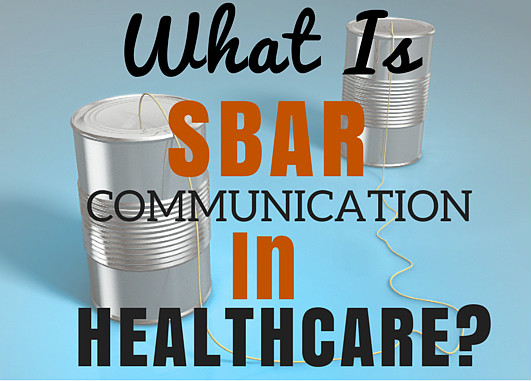We’ve all seen communication tools and styles come and go, but in Healthcare among clinicians, SBAR has seemed to stick. It stands for Situation, Background, Assessment, Recommendation. It works because it’s simple and provides a reliable framework for clinicians to convey urgent and non-urgent information. It is quite useful when clinicians are going through shift change as they communicate patient conditions, but can also be useful in the IT environment.
SBAR didn’t originate in Healthcare, but came from the Navy as a communication method for use on submarines. SBAR can be done verbally, or an organization can use an SBAR form as tool for making formal requests.
It might not surprise you that some folks in the technology sector don’t have the best communication skills. So let’s look at a couple of examples, not in a direct clinical setting, but in IT. We’ll expand on the concept by looking at SBAR from two angles: Incident related and Project related.
Incident Related SBAR
Situation
All of the physicians and MAs in the primary care clinics are reporting slowness using all applications- the EMR, Lab order entry, and clinical references online.
Background
Our network engineer made some changes to the network router that serves the clinics. However, that was yesterday afternoon, and the system slowness didn’t show up until about an hour ago.
Assessment
We think the problem does not lie with the network router, but with the Internet connection to that region.
Recommendation
We need to check with the engineer again to make sure she didn’t make other changes after yesterday. We also need to double check the other care areas to make sure they are not also affected. Check the Inpatient units as well as the other outpatient specialty clinics. Then check back with the original primary care clinics to see if the problem persists.
One thing we need to realize about SBAR is that it doesn’t usually occur in a single straight line. The most complex problems don’t get solved with just one pass between assessment and recommendation. You have to look at assessment and recommendation as a circle that may go in several cycles before arriving at a final recommendation.
Project Related SBAR
Situation
Front Street Primary Care physicians have to send prescriptions to a printer on the other side of the clinic from where they usually work. They have another printer that is close by, but it is not configured to print prescriptions.
Background
The clinic originally only took up a small space, but later expanded to the building next door. They consolidated the space, but never considered printing needs.
Assessment
The printer closest to the physicians is not properly configured for prescriptions.
Recommendation
Have the printer services technician visit the clinic to reconfigure this printer and evaluate any other printing needs.
Does SBAR Work?
I read a couple of studies from The Joint Commission on Healthcare Accreditation, and didn’t find any earth-shattering statistics that proved SBAR success. One study pointed to about a 5% improvement in perceived communication among the clinical participants. However, consider that other studies indicate that up to 80 percent of serious medical errors are connected to miscommunication during the hand-off between medical providers. So when we’re talking about large-scale efforts, a very small improvement in a communication strategy can make the difference in some cases. If it’s something as simple as SBAR, then why not just do it?
Read More

